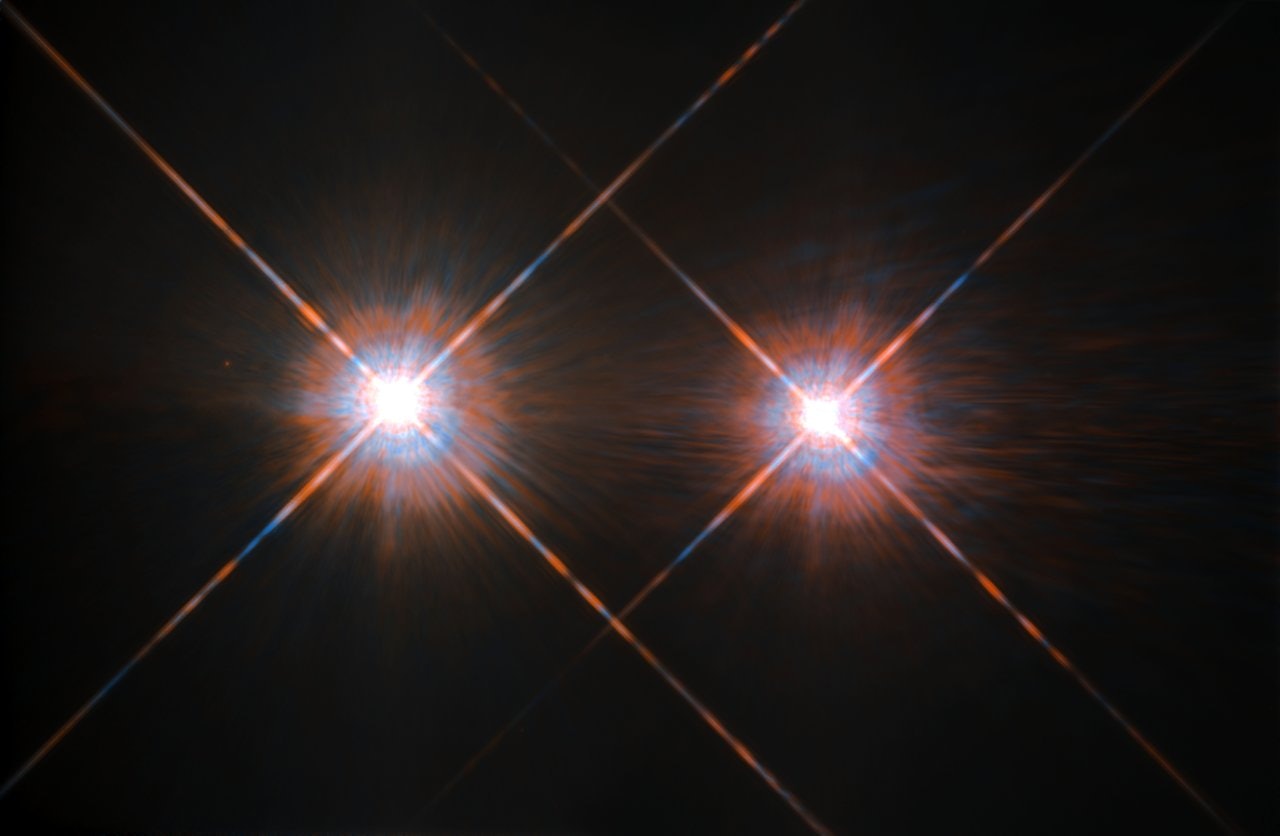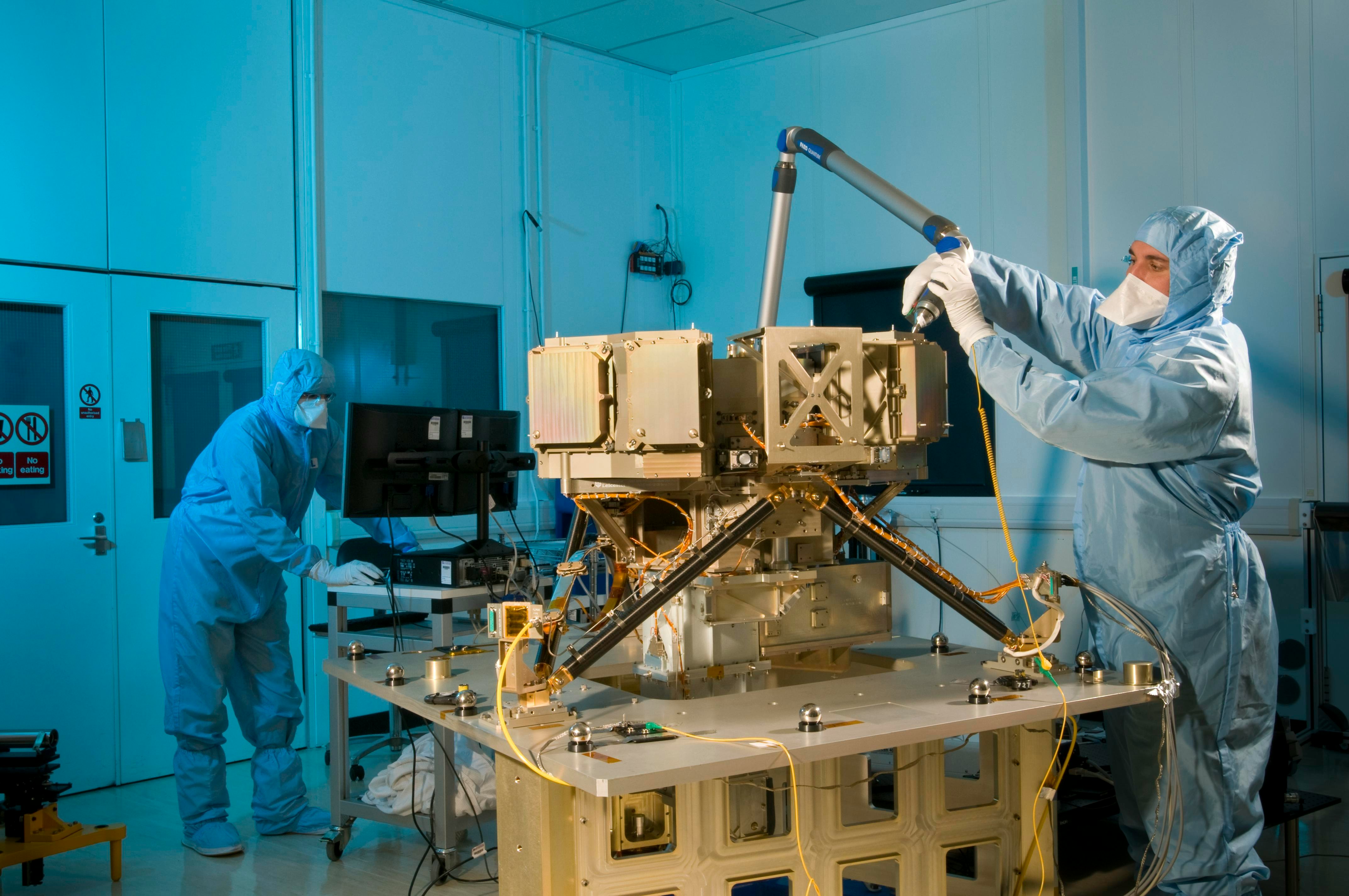
With the Webb Space Telescope on the brink of releasing its first full-color images and data, Jet Propulsion Laboratory astronomer Charles Beichman and his team are about to take a chance on a long-shot search for an exoplanet orbiting one of our closest stellar neighbors.
Alpha Centauri A is just 4.4 light years away, and astronomers have studied it thoroughly over the years — but if there’s a planet orbiting the nearby star, no telescope on Earth or in space has found a trace of it yet.
Astronomers have previously measured how much Alpha Centauri A wobbles, which could reveal the gravitational tug of a planet orbiting the star. And those measurements say there can’t be a very large exoplanet — anything mass of Saturn or larger — within about three astronomical units (an astronomical unit, or AU, is the average distance between Earth and the Sun). There may be no planets there at all.
So Beichman and his colleagues plan to look for something other searches may have missed: an exoplanet small enough to evade detection by radial velocity measurements, but just barely large enough to (hopefully) show up on Webb’s instruments.
What’s new — Beichman’s team is looking for a planet “smaller than Jupiter and Saturn but larger than Uranus,” he tells Inverse. Specifically, they’re searching for something with a radius of about 36,000 kilometers — about half as wide as Jupiter. To do that, they’ll use Webb’s Mid-Infrared Instrument (MIRI) coronagraph, which will block the dazzlingly bright light from Alpha Centauri A so that MIRI can actually see the much dimmer infrared light of a nearby planet.

“The program is risky for a number of reasons,” says Beichman. Webb won’t be in any danger, but Beichman and his team are putting their valuable chunk of observing time on the line, and success is far from a sure thing. But the risk is worth it, according to Beichman, for the prospect of finding — and directly imaging — a planet orbiting the closest Sun-like star to Earth.
For one thing, finding such a relatively small planet will be pushing the limits of what Webb, even with all its formidable specifications, can accomplish.
“Second, Alpha Centauri A is so bright, it is hard to actually aim the telescope at it, since the guide camera for JWST is optimized for fainter stars, not for one of the brightest stars in the sky,” Beichman says. MIRI will also have to contend with stray light from Alpha Centauri B, the smaller partner in the Alpha Centauri system’s binary dance around its shared center of gravity.
And because Alpha Centauri is so close to Earth, it appears to move across the sky faster. “JWST has to track the star carefully to keep it behind the coronagraph mask and prevent its light from spilling out and spoiling the image,” explains Beichman.
“We have workarounds to all of these problems,” he says, “but together they are a challenge.”
But if astronomers like Beichman and his colleagues want to search for planets in Alpha Centauri A’s habitable zone, they’re going to have to wrangle with the challenges of searching for smaller targets, since radial velocity measurements rule out anything bigger than Saturn. And taking on those challenges offers the prospect of big scientific rewards.
Why It Matters – Finding any planet in orbit around Alpha Centauri A would be a major coup for astronomers, especially one in the Sun-like star’s habitable zone.
Recently, astronomers spotted what might be a rocky exoplanet orbiting Proxima Centauri, another member of the complex star system to which Alpha Centauri A and B also belong. Proxima Centauri is even a smidgen closer to Earth (in this case, a smidgen is about 0.127 light years). But Proxima Centauri is a small, cool star called a red dwarf, and red dwarf stars are known for frequently blasting flares out into space, laden with radiation and charged particles that could be anathema to life on surrounding planets.
On the other hand, Alpha Centauri A is a star very similar to our Sun, and if we’re going to find a nearby world that’s analogous to our own, it’s the most likely place. A planet of the size Beichman and his colleagues are looking for, about half the radius of Jupiter, is unlikely to be a habitable, mostly-rocky world like our Earth, but there’s always the chance of a Neptune-sized ocean world.
Here’s the Background – Last year, a team of astronomers led by University of Arizona astronomer Kevin Wagner (now a co-investigator on Beichman’s team for the upcoming search with MIRI), announced that they had spotted a bright dot of infrared light in orbit around Alpha Centauri A. The team used the Very Large Telescope in Chile, with a coronagraph similar to MIRI’s to help filter out the bright light from the star. Wagner and his colleagues dubbed it Exoplanet Candidate C1, and if they’re right, it’s a world about the size of Neptune, orbiting between one and two AU away from Alpha Centauri A.
Wagner and his colleagues published their findings in the journal Nature Communications.

The Webb Telescope might help confirm whether C1, the bright infrared spot in the Very Large Telescope data, is actually an exoplanet or something else, like an asteroid belt or a dust cloud heated by Alpha Centauri A’s warm starlight. Even that would be an interesting discovery.
“Even if we do not find a planet, there is a good chance we could find an asteroid belt of dusty material heated by Alpha Centauri,” says Beichman. “The asteroid belt is potentially a signpost of the presence of smaller planets and would encourage us to come back and keep looking after our initial reconnaissance.”
What’s next — While Beichman and his team won’t be able to measure the chemical makeup of their possible exoplanet’s atmosphere — it’s unlikely to transit its home star — a find could pave the way for much more detailed study of a nearby alien world.
“If we do find a planet, then the discovery will set the stage for many years of study with future large telescopes from the ground or in space, which might have the capability to characterize the planet with spectroscopy and to search for still smaller planets,” Beichman says.
Of course, Alpha Centauri A — and any exoplanets our neighbor may be hiding — will be just the beginning of the Webb Space Telescope’s long search for potentially habitable worlds around other stars. But it would be pretty cool to find one so close to home.







